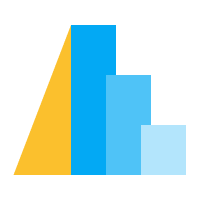多行工具提示 (标准)#
此示例展示了如何在与多行工具提示中相同的图表上添加标准工具提示。你可以在关于透视转换的文档中找到使用此方法的另一个示例。
import altair as alt
import pandas as pd
import numpy as np
np.random.seed(42)
columns = ["A", "B", "C"]
source = pd.DataFrame(
np.cumsum(np.random.randn(100, 3), 0).round(2),
columns=columns, index=pd.RangeIndex(100, name="x"),
)
source = source.reset_index().melt("x", var_name="category", value_name="y")
# Create a selection that chooses the nearest point & selects based on x-value
nearest = alt.selection_point(nearest=True, on="pointerover",
fields=["x"], empty=False)
# The basic line
line = alt.Chart(source).mark_line(interpolate="basis").encode(
x="x:Q",
y="y:Q",
color="category:N"
)
when_near = alt.when(nearest)
# Draw points on the line, and highlight based on selection
points = line.mark_point().encode(
opacity=when_near.then(alt.value(1)).otherwise(alt.value(0))
)
# Draw a rule at the location of the selection
rules = alt.Chart(source).transform_pivot(
"category",
value="y",
groupby=["x"]
).mark_rule(color="gray").encode(
x="x:Q",
opacity=when_near.then(alt.value(0.3)).otherwise(alt.value(0)),
tooltip=[alt.Tooltip(c, type="quantitative") for c in columns],
).add_params(nearest)
# Put the five layers into a chart and bind the data
alt.layer(
line, points, rules
).properties(
width=600, height=300
)
import altair as alt
import pandas as pd
import numpy as np
np.random.seed(42)
columns = ["A", "B", "C"]
source = pd.DataFrame(
np.cumsum(np.random.randn(100, 3), 0).round(2),
columns=columns, index=pd.RangeIndex(100, name="x"),
)
source = source.reset_index().melt("x", var_name="category", value_name="y")
# Create a selection that chooses the nearest point & selects based on x-value
nearest = alt.selection_point(nearest=True, on="pointerover",
fields=["x"], empty=False)
# The basic line
line = alt.Chart(source).mark_line(interpolate="basis").encode(
x="x:Q",
y="y:Q",
color="category:N"
)
when_near = alt.when(nearest)
# Draw points on the line, and highlight based on selection
points = line.mark_point().encode(
opacity=when_near.then(alt.value(1)).otherwise(alt.value(0))
)
# Draw a rule at the location of the selection
rules = alt.Chart(source).transform_pivot(
"category",
value="y",
groupby=["x"]
).mark_rule(color="gray").encode(
x="x:Q",
opacity=when_near.then(alt.value(0.3)).otherwise(alt.value(0)),
tooltip=[alt.Tooltip(c, type="quantitative") for c in columns],
).add_params(nearest)
# Put the five layers into a chart and bind the data
alt.layer(
line, points, rules
).properties(
width=600, height=300
)
